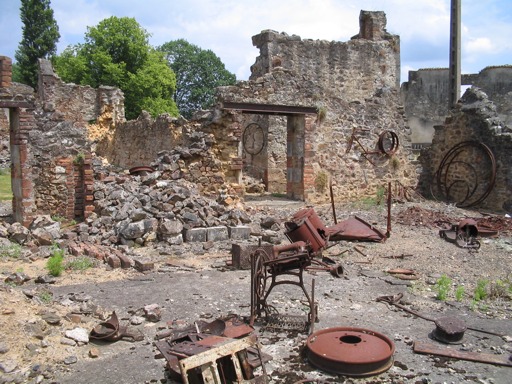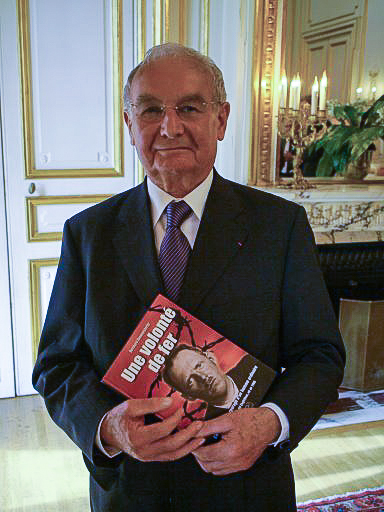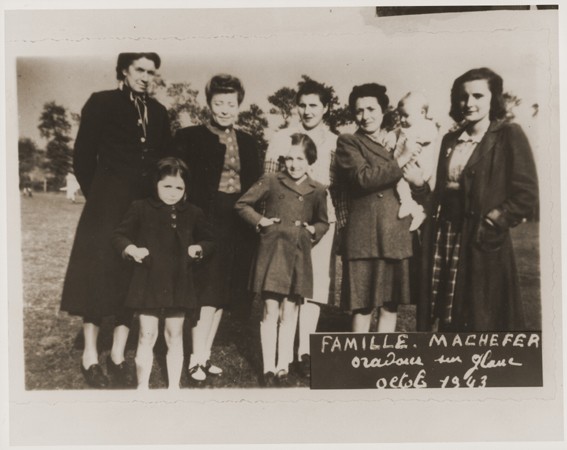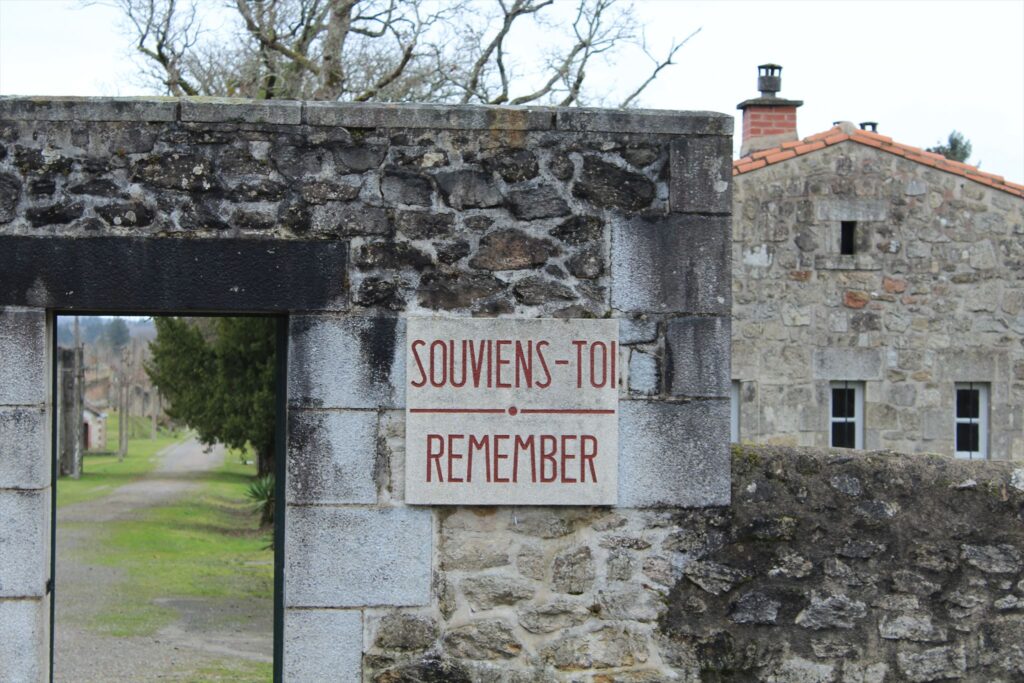In the summer of 1987 Mike Radow and I were driving the back roads of France in my crappy Renault 5 and stumbled on Oradour-sur-Glane, the site of a notorious massacre carried out by Nazi SS troops. The village has been preserved as the Nazis left it, as a memorial. We stopped and walked through the burned-out main street: hulks of old cars, houses missing roofs and fronts, a chimney here, a sewing machine there. 

We came on a tour group. The speaker was an older man who was one of about thirty people who escaped the slaughter. His audience had tears running down their faces as he told the story.
The men had been gathered in several barns; the women and children in the church. The Nazis machine-gunned their victims, often just in the legs. They threw grenades into the church. They piled straw and other combustibles on top of the wounded, then set fire to the church and to the barns. They pillaged the houses of food and valuables, setting each house afire once it was looted, and finally burned the whole village. People found hiding in their homes during this pillaging were killed. Most of the victims died by being burned alive.
The old man saw me standing at the back in my Moroccan black leather jacket, looking very Aryan. “D’ou venez-vous?” he asked. Where are you from?
It was one of the few times in my life that I was completely happy to say, “Je suis Americain.” The whole group sighed in relief.
The massacre took place on my birthday, June 10th, in 1944, eight years before I was born. It was apparently a reprisal for some Résistance attack in the days following the Normandy landings on June 6th—an attack that had nothing to do with Oradour-sur-Glane or any of its residents. The total number of people killed was 642, but only 52 of the bodies could be identified. The rest were beyond recognition.
In the spring of 1992 I was living in Vienna, Austria. One day I found, in the International Herald-Tribune, this brief article:
I had no words to express my disgust and outrage then, and thirty years later that has not changed, even though the account given of the massacre on the French version of Wikipedia (see below) describes Stadler as a colonel, not the regiment commander.
Almost none of the perpetrators were prosecuted; most of those that were imprisoned served less than five years before being released. One SS Sergeant was sentenced to life in prison in 1981. In 1997 he was released on humanitarian grounds. He died in 2007, age 86.
Here is an English-language account of the massacre, and a more detailed account in French.

The man telling the story of the massacre in 1987 might have been Robert Hébras, who was wounded by machine-gun fire in his leg, abdomen, and wrist, but played dead. He and four others remained hidden underneath the corpses of their friends and neighbours even after the fire was set, waiting until the last possible moment to make their escape. He died this past February 11th, 2023, 97 years old. May he rest in peace.




I couldn’t see the photos for some reason but maybe don’t need to. This was horrific, senseless, and forever taints us.
Sorry you couldn’t see the photos. Can you see them now? If not, you can just search for images of Oradour-sur-Glane on the web. Yes, the whole thing is horrifying.
I simply wonder about (not so much why) someone felt to ask where you were from.
Thanks, Eric.
Hi Loc! The man obviously wondered if I was German—which I certainly could be, based on my looks. One set of my great-grandparents were Germans who emigrated to the US in the late 19th century. My answer and, even more I imagine, my accent, convinced him and everyone else there that I was American.